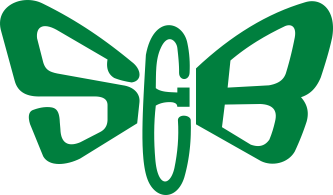Social wasps (Vespidae: Polistinae) harvesting food bodies of Cecropia Loefl. (Urticaceae) in Central Amazon
DOI:
https://doi.org/10.37486/2675-1305.ec06002Keywords:
agonistic interactions, müllerian bodies, parasites of mutualism, pearl bodiesAbstract
Social wasps are among the most curious non-ant insects known to harvest food bodies of Cecropia Loefl. The aim of this note is to describe for the first time: (1) interactions between wasp species which harvest food bodies; (2) interactions of these wasps with other insects associated to Cecropia (ants, assassin bugs); (3) the use of a food resource different from müllerian bodies; and (4) wasp species whose association with Cecropia was unknown until now. All records were made in Manaus region and in Uatumã Sustainable Development Reserve (Amazonas State, Brazil), with the aid of a digital camera. The wasp and ant species involved were captured for later identification. The recorded wasp species were: Charterginus xanthura Saussure, 1854, Protopolybia chartergoides Gribodo, 1891, Protopolybia minutissima Spinola, 1851, and Synoeca virginea Fabricius, 1804 (Hymenoptera: Vespidae). The findings corroborate the importance of food bodies not only for Azteca Forel, 1878 ants, but also for other social insects.
Downloads
References
Berg, C. C. (1978) Espécies de Cecropia da Amazônia Brasileira. Acta Amazonica, 8(2): 149-182. doi: 10.1590/1809-43921978082149
Berg, C. C.; Rosselli, P. F. (2005) Cecropia. Flora Neotropica, 94: 1-230. https://www.jstor.org/stable/4393938
Bérenger, J. M.; Pluot-Sigwalt, D. (1997) Relations privilégiées de certains Hétéroptères Reduviidae prédateurs avec les végétaux. Premiers cas connus d’um Harpactorinae phytophage. Comptes Rendus de l'Académie des Sciences - Series III - Sciences de la Vie, 320(12): 1007-1012. doi: 10.1016/s0764-4469(97)82474-2
Borges, R. C.; Felizardo, S. P. S.; Santos, J. N.; Silveira, O. T. S. (2017) Nest building by a neotropical social wasp using Cecropia trichomes as main construction material (Hymenoptera, Vespidae, Polistinae). Insectes Sociaux, 64(3): 403-413. doi: 10.1007/s00040-017-0563-x
Curio, E. (1976) The ethology of predation. Berlin: Springer. doi: 10.1007/978-3-642-81028-2
Davidson, D. W.; Longino, J.; Snelling, R. R. (1988) Pruning of host plant neighbors by ants: an experimental approach. Ecology, 69(3): 801-808. doi: 10.2307/1941029
Felizardo, S. P. S.; Borges, R. C.; Santos, J. N. A.; Silveira, O. T. (2017) Two more social wasp species (Vespidae, Polistinae) collect mullerian bodies from Cecropia trees (Urticaceae). Sociobiology, 64(4): 451-455. doi: 10.13102/sociobiology.v64i4.1684
Gutiérrez-Valencia, J.; Chomicki, G.; Renner, S. S. (2017) Recurrent breakdowns of Mutualisms with ant in the neotropical ant-plant genus Cecropia (Urticaceae). Molecular Phylogenetics and Evolution, 111: 196-205. doi: 10.1016/j.ympev.2017.04.009
Hölldobler, B.; Wilson, E. O. (1990) The Ants. Harvard: Harvard University Press.
Janzen, D. H. (1969) Allelopathy by myrmecophytes: the ant Azteca as an allelopathic agent of Cecropia. Ecology, 50(1): 147-153. doi: 10.2307/1934677
La Pierre, L.; Hespenheide, H.; Dejean, A. (2007) Wasps robbing food from ants: a frequent behavior? Naturwissenschaften, 94(12): 997-1001. doi: 10.1007/s00114-007-0270-y
Longino, J. T. (2007) A taxonomic review of the genus Azteca (Hymenoptera: Formicidae) in Costa Rica and a global revision of the aurita group. Zootaxa, 1491(1): 1-63. doi: 10.11646/zootaxa.1491.1.1
Marshall, J. J.; Rickson, F. R. (1973) Characterization of the a-D-glucan from the plastids of Cecropia peltata as a glycogen-type polysaccharide. Carbohydrate Research, 28(1): 31-37. doi: 10.1016/S0008-6215(00)82853-0
Müller, F. (1876) Ueber das Haarkissen am Blattstiel der Imbauba (Cecropia), das Gemüsebeet der Imbauba-Ameise. Jenaische Zeitschrift fur Medizin und Naturwissenschaft, 10: 281-286.
Oliveira, K. N.; Coley, P. D.; Kursar, T. A.; Kaminski, L. A.; Moreira, M. Z.; Campos, R. I. (2015) The effect of symbiotic ant colonies on plant growth: a test using an Azteca-Cecropia system. PloS ONE, 10(3): e0120351. doi: 10.1371/journal.pone.0120351
Price P. W. (1997) Insect Ecology. 3 ed. New York: John Wiley & Sons.
Richards, O. W. (1978) The social wasps of the Americas excluding the Vespinae. London: British Museum (Natural History).
Rickson, F. R. (1976) Ultrastructural differentiation of the Mülllerian body glycogen plastid of Cecropia peltata. American Journal of Botany, 63(9): 1272-1279. doi: 10.1002/j.1537-2197.1976.tb13211.x
Somavilla, A.; Carpenter, J. M. (2021) Key to the genera of social wasps (Polistinae) occurring in Neotropics. In: Prezoto, F.; Nascimento, F. S.; Barbosa, B. C.; Somavilla. A. (Eds.), Neotropical Social Wasps, pp. 327-336. Gewerbestrasse: Springer. doi: 10.1007/978-3-030-53510-0_18
Vasconcelos, H. L.; Casimiro, A. B. (1997) Influence of Azteca alfari ants on the exploitation of Cecropia trees by a leaf-cutting ant. Biotropica, 29(1): 84-92. doi: 10.1111/j.1744-7429.1997.tb00009.x
Downloads
Published
How to Cite
Issue
Section
License
Copyright (c) 2024 Author(s)

This work is licensed under a Creative Commons Attribution 4.0 International License.
© The author(s) - Published by Sociedade Entomológica do Brasil
Funding data
-
Coordenação de Aperfeiçoamento de Pessoal de Nível Superior
Grant numbers 88887.839244/2023-00;88887.372176/2019-00 -
Conselho Nacional de Desenvolvimento Científico e Tecnológico
Grant numbers 441811/2020-5;300740/2022-0









